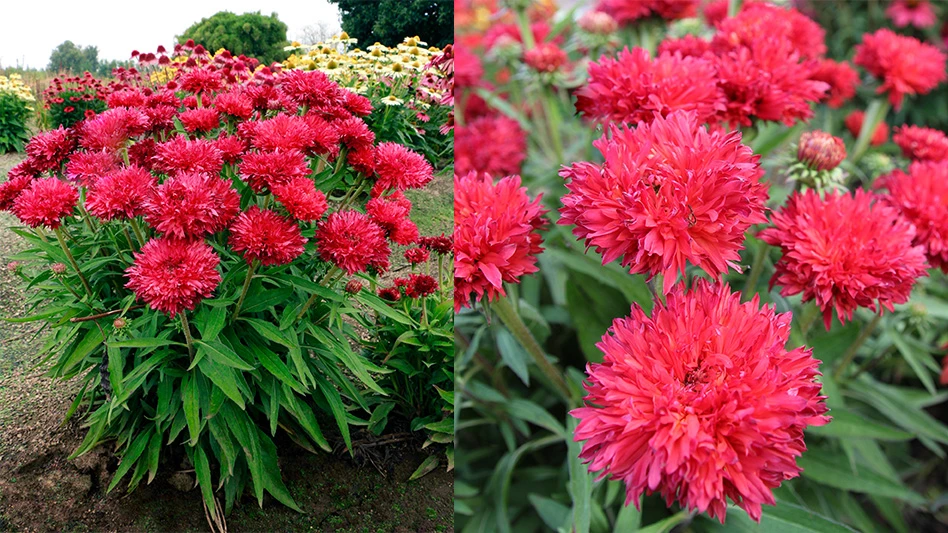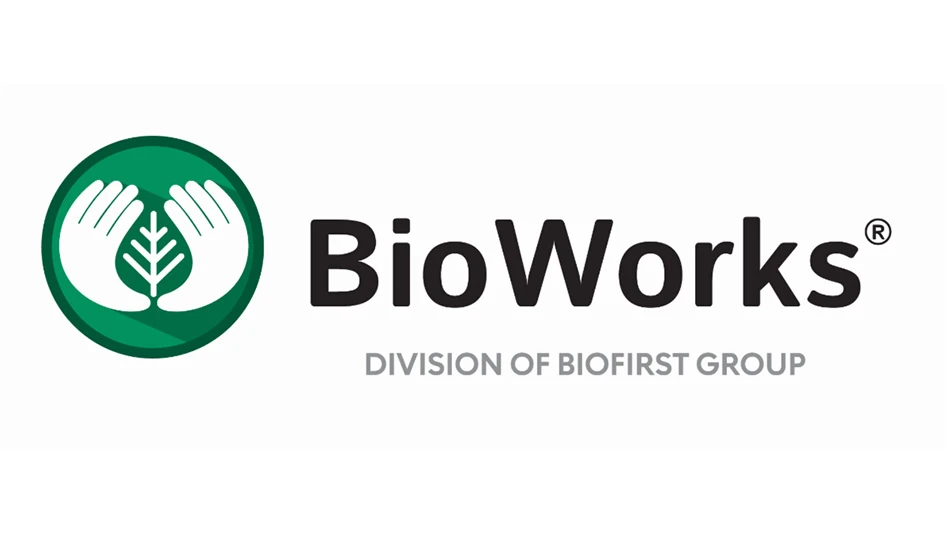 Imagine a yield of impatiens — the variety of jewel-toned flowers stretching out across your greenhouse and making you think of the crowds of consumers who will be attracted by the bright pinks, reds and purples of this shade-resistant plant.
Imagine a yield of impatiens — the variety of jewel-toned flowers stretching out across your greenhouse and making you think of the crowds of consumers who will be attracted by the bright pinks, reds and purples of this shade-resistant plant.
But within a week, these beautiful flowers start dropping yellowed leaves. Soon after, the vibrant heads are lost, leaving plain, green sticks behind. Eventually, even these collapse.
“There’s nothing left in the bed,” says Colleen Warfield, a corporate plant pathologist for Chicago-based Ball Horticultural Co. “There’s just no color left. It’s a huge disappointment.”
This devastation is caused by downy mildew, a family of fungal-like oomycete microbes that attacks a number of plant crops. In addition to impatiens, growers are dealing with devastating outbreaks among coleus, roses, veronica, sunflowers, snapdragons, pansies and other ornamental plants upon which growers rely to sustain their businesses.
Once it’s contracted, these host-specific pathogens spread like wildfire, with reproduction and reinfection taking as little as five to 14 days.
“It’s amazing, the spores can spread very quickly, and it’s mind boggling how efficient and how effective they are at spreading and colonizing plant tissue,” says Aaron Palmateer, assistant professor and extension specialist in ornamental plant pathology at the University of Florida, IFAS (Institute of Food and Agricultural Sciences).
Growers need to be aware of this tenacious threat — particularly as it pertains to their ornamental types — to prevent widespread, costly losses.
Determining the risk
Downy mildews thrive in high relative humidity and cool temperatures ranging from the high 50s to mid 70s. Humidity often causes prolonged leaf wetness, which is the perfect condition for this water mold family — and common among most greenhouses.
“If you’ve got a greenhouse environment, it doesn’t really matter what part of the country you’re in, because you could have conducive conditions in your greenhouse,” Warfield says.
Region does come into play, however, if you live in an area where the plants you sell naturally occur outside, as this increases the chance of downy mildew spreading. Impatiens downy mildew, for example, is a particular issue for Florida growers because it is a common blight among the region’s wild impatiens.
“In 2011 is when it really seemed to start affecting the industry. It was kind of like a bomb went off,” Palmateer says. “ That’s when we first started seeing it affecting growers in Florida, and it was during the winter time, when impatiens are a big commodity down here.”
Identification and reaction
Because downy mildews are host specific, symptoms vary per plant. The common telltale sign among this fungal-like family is soft, downy-like sporulation on the underside of plant leaves.
“It’s a difficult thing to scout for because you can’t really go in and flip over every single leaf, but you do have to be aware that that’s where the evidence is going to be,” Warfield says. “Of course, you don’t ever want to let it get to the point where you’re seeing sporulation in your greenhouse, because at that point it becomes very difficult to control.”
Though harder to spot conclusively, earlier symptoms include distorted growth among seedlings and yellowing or stippling on the topside of the leaves opposite sporulation. Research your particular ornamentals for host-specific information. Among coleus plants, for example, brown spotting and leaf dropping are further indicators.
If you suspect that downy mildew may be affecting your plants but you don’t yet see sporulation, you can send samples to a lab. But Warfield cautions that this is often impractical.
“Generally, unless the plant becomes infected very young, the pathogen is not systemic in the plant,” she says. “And so it’s very much a needle in the haystack.”
And if you do see sporulation, a test isn’t needed: That unmistakable sign indicates it’s already too late. Discard or burn any plants with sporulation immediately, bagging them before carrying them out of your greenhouse to ensure you don’t spread the downy mildew further.
If you have an outbreak of downy mildew, assume that the entire plant yield is infected. After removing the plants with sporulation, start treating those lacking signs with fungicides, and closely monitor for downy mildew growth over the next couple of weeks.
“You might remove a plant with sporulation on day one, but those spores could have infected plants in your greenhouse that day, and two weeks later you see sporulation again,” Warfield says. “It can become a never-ending cycle; you may not be able to keep ahead of it.”
Protecting with prevention
First and foremost, inspect every plant susceptible to a downy mildew before bringing it into your greenhouse.
“Scout that material as you bring it into your production facility to make sure you’re not introducing diseased material like liner trays or whatnot into your facility,” Palmateer says. “If you’re growing from seed, make sure you monitor seedlings for any type of symptom associated with downy mildew.”
Additionally, keep humidity below 85 percent in your greenhouse to help mitigate your risk. Keep moisture levels down further by watering plants early in the day so leaves have time to dry in the sun before nightfall.
Also, treat plants susceptible to a downy mildew with fungicide. Though availability is more limited, Warfield recommends a drench treatment over foliar applications because it has a much longer efficacy.
Fungicides also need to be rotated, as downy mildews are notorious for mutating and building resistance to them. Mix or rotate five or six fungicides of different chemical families, which are coded by the Fungicide Resistance Action Committee (FRAC).
“It’s really important that growers look at the (fungicide) label for those FRAC codes to make sure they’re using different ones and rotating the chemistries that correspond with those FRAC codes,” Palmateer says.
Advancements continue with regard to prevention. BASF launched the new fungicide Orvego, which has a newer chemistry designed to help minimize the chance for resistance in the downy mildew population. Palmateer says he has also seen strong results in his work on impatiens downy mildew with the use of phosphorus acid-containing products, which can be found in some fertilizers in addition to fungicides.
“Everybody that’s growing a plant in a greenhouse situation is susceptible to a downy mildew,” Palmateer explains. “They need to be very cautious and take preventative action and do their homework and make informed decisions to prevent major losses. Because once you have it, it’s a huge risk and can be devastating.”
Jessica Hanna is a Cleveland-based freelance writer and frequent contributor to Greenhouse Management.
Photo courtesy ANN R. CHASE.
WANT MORE?
Enter your email to receive our newsletters.

Explore the April 2013 Issue
Check out more from this issue and find your next story to read.
Latest from Greenhouse Management
- Grant awarded to test western U.S. wood species for use as wood fiber potting substrate
- Pennsylvania Horticultural Society announces 2025 Gold Medal Plant winners
- Oasis Grower Solutions announces new Southeast territory sales manager
- How to reduce labor in greenhouse vegetable production
- A nation of gardeners: A history of the British horticulture industry
- Last Word with Angela Labrum, Bailey Nurseries
- Iowa plant supplier Plantpeddler building retail complex
- This month's Greenhouse Management magazine is about native plants and sustainability





